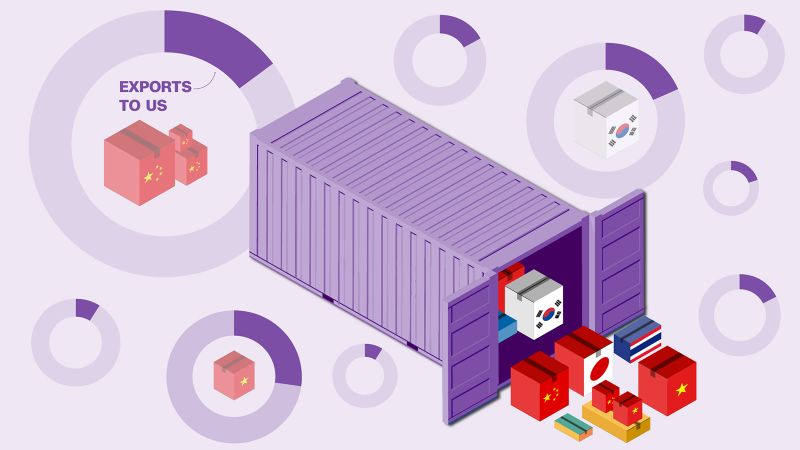President-elect Donald Trump has announced his intention to impose massive hikes in tariffs on goods coming from Mexico, Canada, and China starting on the first day of his second term. This move is expected to have significant effects on the relationship the United States has with its biggest trading partners, particularly in Asia, and potentially causing ripple effects on their economies.
Japan’s exports to the US last year accounted for 20% of its total, while South Korea’s US trade accounted for $116 billion. However, Trump’s planned tariffs on Chinese goods could also benefit some countries in Southeast Asia as factories may relocate from China to other places in the region.
The US has been the number one recipient of exports from China, Vietnam, Thailand, India, and Japan, and the second-largest recipient from South Korea and Indonesia. It is also the third-largest recipient from Malaysia and Singapore. The US imported most goods from Mexico, followed by China and Canada, with six of the top 10 countries being in Asia.
The US has a trade deficit with many Asian nations, meaning that it imports more from them than it exports. In the first nine months of 2024, the US recorded a deficit of $90.6 billion with Vietnam, with Japan and South Korea also ranking in the top 10.
Trump’s aim is to increase tariffs on all imports to shrink or eliminate the trade deficit, but economists warn that this will effectively be a tax paid by Americans, driving prices up at home as companies pass on the increased cost of imports to consumers. As one CEO noted, “If we get tariffs, we will pass those tariff costs back to the consumer.”

